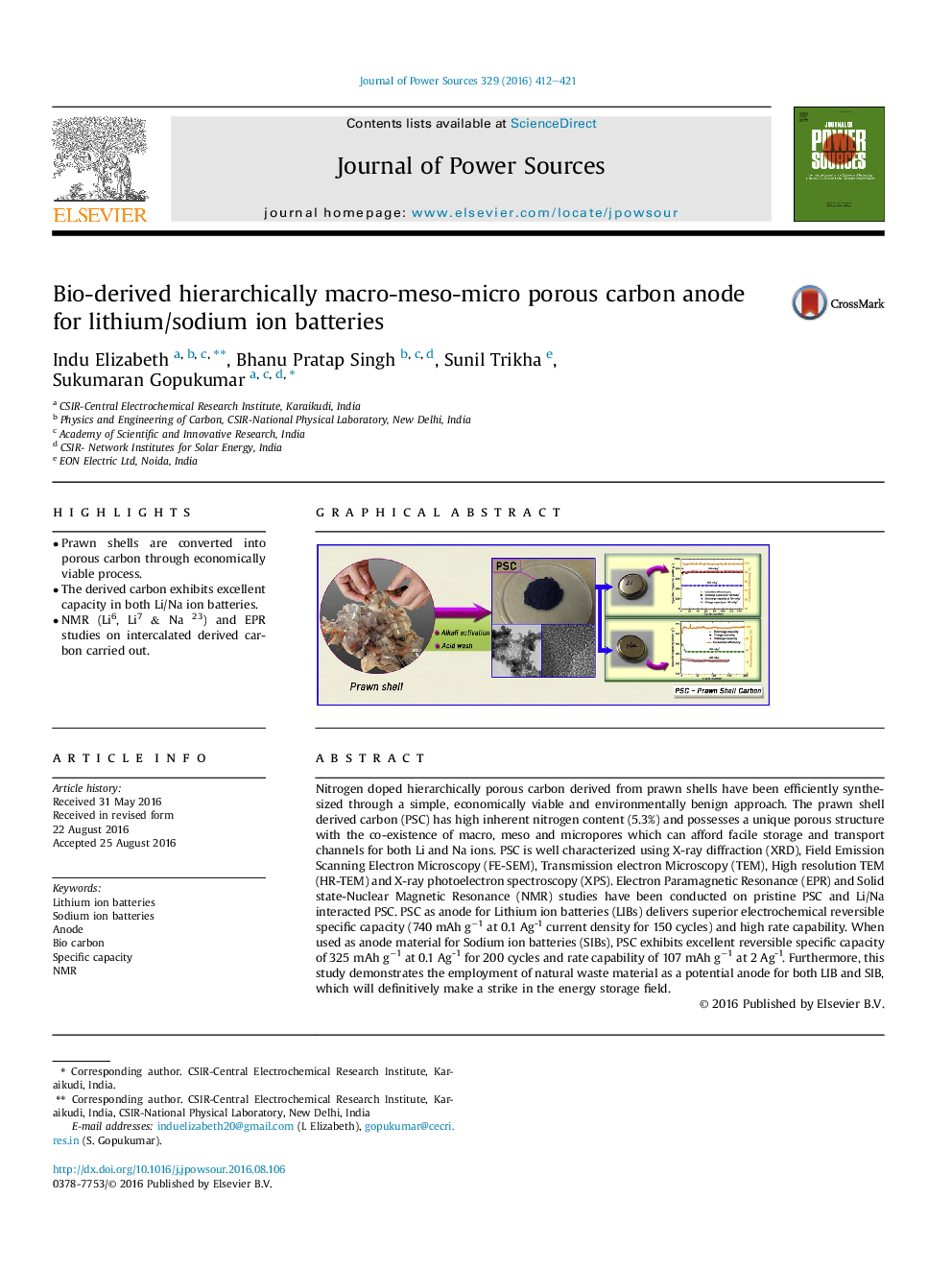| Article ID | Journal | Published Year | Pages | File Type |
|---|---|---|---|---|
| 1283412 | Journal of Power Sources | 2016 | 10 Pages |
•Prawn shells are converted into porous carbon through economically viable process.•The derived carbon exhibits excellent capacity in both Li/Na ion batteries.•NMR (Li6, Li7 & Na 23) and EPR studies on intercalated derived carbon carried out.
Nitrogen doped hierarchically porous carbon derived from prawn shells have been efficiently synthesized through a simple, economically viable and environmentally benign approach. The prawn shell derived carbon (PSC) has high inherent nitrogen content (5.3%) and possesses a unique porous structure with the co-existence of macro, meso and micropores which can afford facile storage and transport channels for both Li and Na ions. PSC is well characterized using X-ray diffraction (XRD), Field Emission Scanning Electron Microscopy (FE-SEM), Transmission electron Microscopy (TEM), High resolution TEM (HR-TEM) and X-ray photoelectron spectroscopy (XPS). Electron Paramagnetic Resonance (EPR) and Solid state-Nuclear Magnetic Resonance (NMR) studies have been conducted on pristine PSC and Li/Na interacted PSC. PSC as anode for Lithium ion batteries (LIBs) delivers superior electrochemical reversible specific capacity (740 mAh g−1 at 0.1 Ag-1 current density for 150 cycles) and high rate capability. When used as anode material for Sodium ion batteries (SIBs), PSC exhibits excellent reversible specific capacity of 325 mAh g−1 at 0.1 Ag-1 for 200 cycles and rate capability of 107 mAh g−1 at 2 Ag-1. Furthermore, this study demonstrates the employment of natural waste material as a potential anode for both LIB and SIB, which will definitively make a strike in the energy storage field.
Graphical abstractFigure optionsDownload full-size imageDownload as PowerPoint slide
